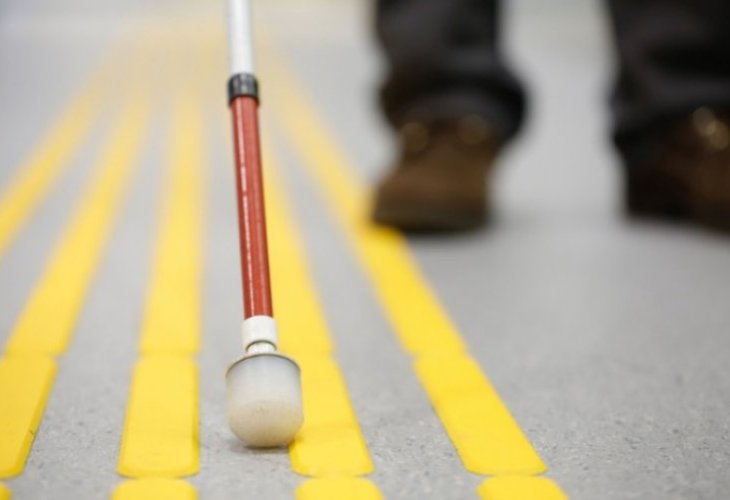Driving Under the Influence of Medication
Did you know that one in five accidents is caused directly or indirectly by medication? We all know the mantra 'Don't drink and drive,' but most drivers are unaware of how medication affects their driving. What should you look out for when starting a new prescription, and which medications should you be cautious about?
 Illustrative photo
Illustrative photoUnfortunately, not a day goes by without a traffic accident occurring. While significant attention is given to vehicles—equipped with advanced life-saving technologies such as seat belts, airbags, advanced braking systems, or danger detection systems—it seems that the focus on road users, whether drivers or pedestrians, has lagged. Although there is an effort to combat alcohol consumption before driving, what about driving under the influence of medication?
Statistically, one in five accidents is caused directly or indirectly by medications. There are also statistics that mention 3%-10% of accidents. The variance in data is because very few studies focus on the unique effects of medications on traffic accidents. The problem is that most drivers (about 80%) are unaware of the risks associated with driving under the influence of medications.
It appears medications can impact a person's mental and physical state, impairing their driving abilities and potentially leading to accidents. However, the law in Israel does not prohibit driving under the influence of medication, even though it forbids driving under the influence of illegal drugs or alcohol.
 Illustrative photo
Illustrative photoRisk Levels with Medications
Below is a review of different medications and their associated risks with driving, excluding medications prescribed for cancer.
Sleep disorder medications: These include medications such as Zodorm, Ambien CR, Nocturno, Hypnodorm, Bondormin. Individuals taking these medications should ensure safe driving only after having sufficient sleep of at least eight hours after taking the medication. For instance, if one takes the medication at three in the morning, driving is prohibited before eleven in the morning.
Mental illness medications: This group poses a significant risk for driving, including antidepressants, antipsychotics, and sedatives.
Antidepressants: They can cause fatigue, dizziness, and confusion, which may affect driving capabilities. Studies demonstrate that drivers regularly taking antidepressants drive less efficiently compared to those who do not take such medications.
Sedatives: Particularly problematic are those sedatives belonging to the benzodiazepines family, like Vaben, Clonex, Assival. For driving safety, they are deemed the most hazardous. It is estimated that one in five accidents involving medication is attributable to this group. These drugs not only cause excessive fatigue but also dizziness and confusion, and in elderly patients, they may result in coordination issues and paradoxical reactions. In such cases, driving is prohibited.
Antipsychotic medications have characteristic side effects such as Parkinsonian-like symptoms, consciousness disturbances, sweating outbreaks, and hypotension.
High blood pressure medications: While medications for high blood pressure are not expected to cause driving problems, a group of medications called "alpha-blockers," like Cardoral, can cause orthostatic hypotension at the onset of treatment.
Diabetes medications: Medications for diabetes, such as Amaryl, Gluco-Rite, Gluben, and various forms of insulin, present a risk of hypoglycemia (low blood sugar), affecting attention and coordination. A study conducted on driving under the influence of diabetes medications found that participants failed to notice stop signs or drove too fast or too slow. It is crucial for diabetes patients to keep glucose tablets for hypoglycemia symptoms. If there are treatment changes, driving should be limited until balanced control is achieved. Notably, the medication Metformin does not cause hypoglycemia and is considered safe for driving.
Vision disturbances after using eye drops: Ophthalmologists sometimes administer dilation drops that impair acuity and increase light sensitivity for three to five hours. Hence, it’s advised not to drive to eye exams alone or without a companion. In cases of chronic dilation treatment, like with Atrospan, driving is completely forbidden.
Pain relievers: Among pain relief medications affecting driving safety are those in the opioid group, like Percocet, Oxycontin, etc. These medications significantly impair attention. Even codeine, found in many cough medications, may affect driving as it metabolizes up to 20% into morphine in the body. Pain relievers like Acamol and Optalgin are safe for driving, but high-dose Advil can cause dizziness and fatigue.
Non-steroidal anti-inflammatory drugs (NSAIDs): These medications, such as Voltaren, Etopan, Naxyn, can cause gastrointestinal issues like nausea and stomach cramps, and in some cases fatigue and dizziness. These effects can impact driving alertness.
Antihistamines (anti-allergy drugs): New-generation antihistamines, like Telfast 120, Lorastin, and Aerius, are relatively safe for driving, but older-generation drugs cause drowsiness. These are included in cough and congestion preparations like Broncholate Plus, Promethazine Expectorans.
Motion sickness and nausea medications: Drugs such as Travamin or Pramin cause drowsiness and lethargy and should not be taken if driving.
Elderly, Medications, and Driving
As is well known, the elderly take various medications, including sedatives and sleep disorder medications, which as mentioned, impair driving abilities. Moreover, polypharmacy among the elderly poses an additional risk to driving abilities, in addition to the illnesses themselves that may impair driving abilities.
Responsibility lies both with the healthcare system and the patient: the healthcare system, primarily doctors and pharmacists, is required to warn patients about medications that may impair driving abilities and alertness. Unfortunately, this is done too infrequently. This could change when Health Ministry guidelines, requiring pharmacists to question patients at medication dispensing, take effect. Notably, in August, the Health Ministry announced the creation of an inter-ministerial committee examining driving under the influence of medication. So far, the committee's recommendations have not been published. As noted earlier, the law does not prohibit driving under the influence of medication.
Patient: Patients taking medication must remember that any new drug treatment can potentially cause side effects, such as impairments in alertness or other side effects that may affect driving abilities.
Before taking the medication, it's crucial to carefully read the patient information leaflet, which includes warnings about impaired driving abilities and warnings about operating hazardous equipment. Additionally, in the medication guide on the General Health Fund website, each medication information page includes a section discussing driving under its influence.
(Special thanks: to Dr. Aryeh Goldschmidt, former Head of the Pharmacology Department at Clalit Health Services and Estee Lubitz).

